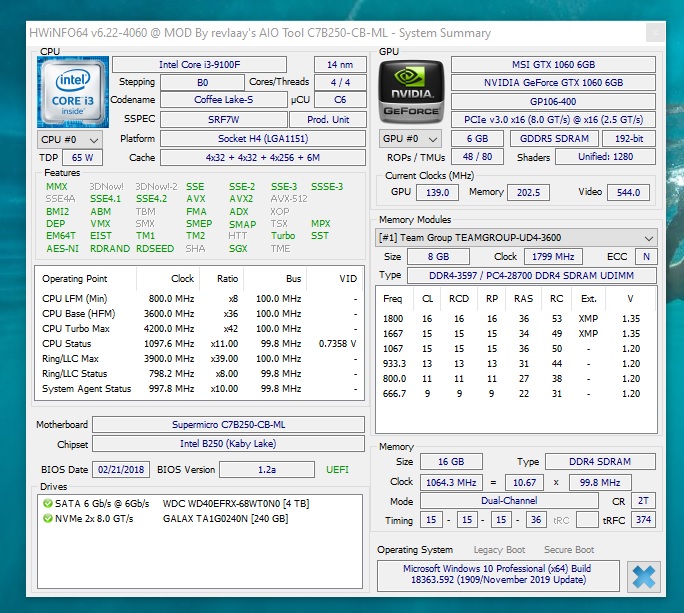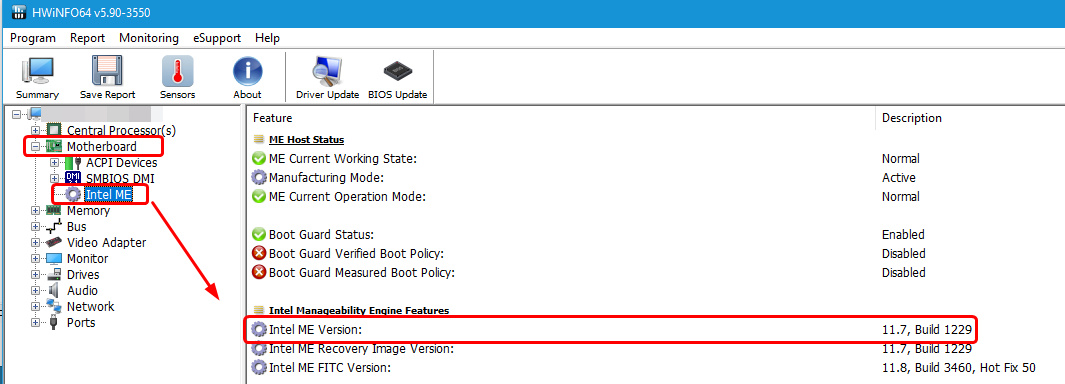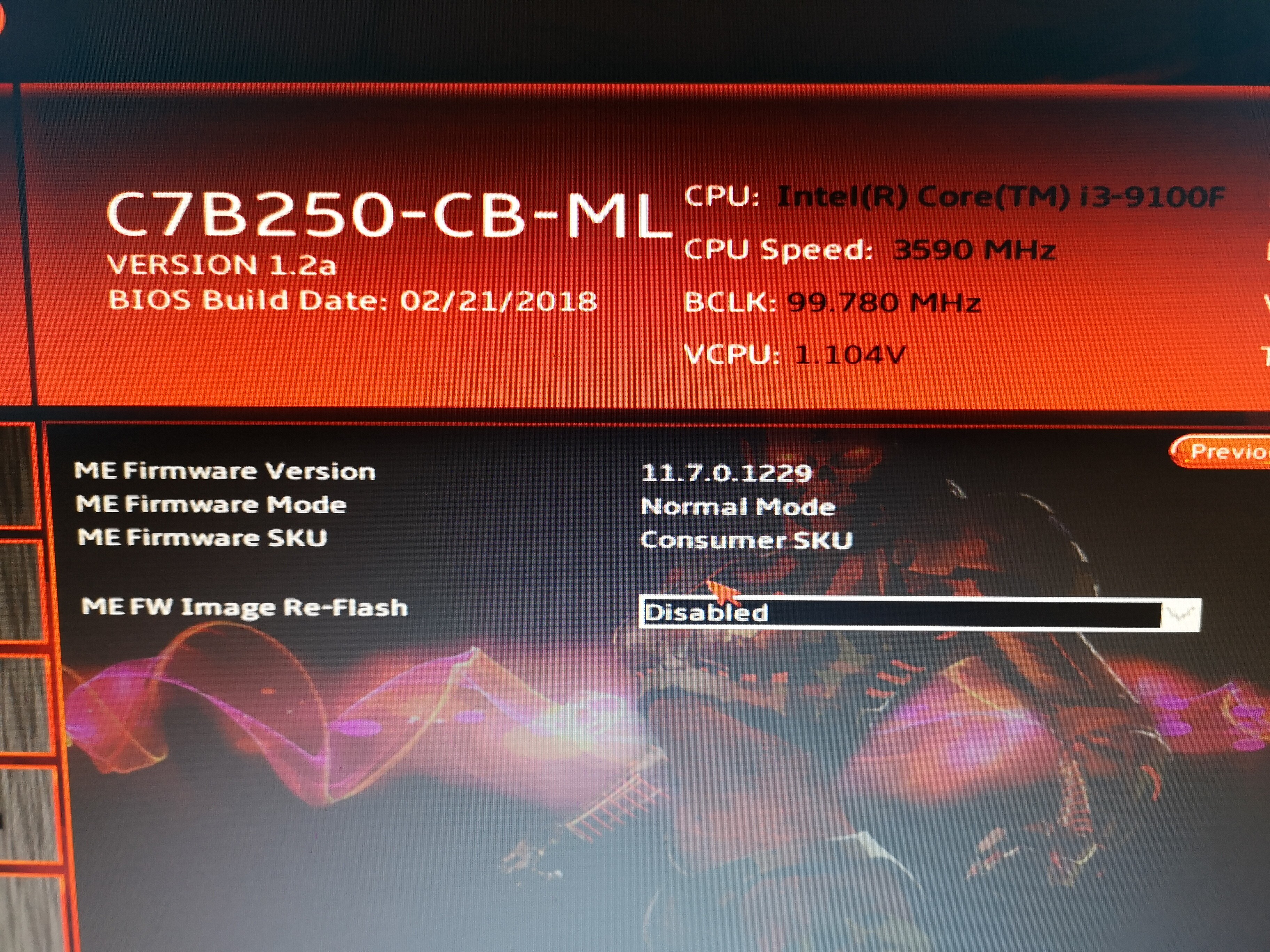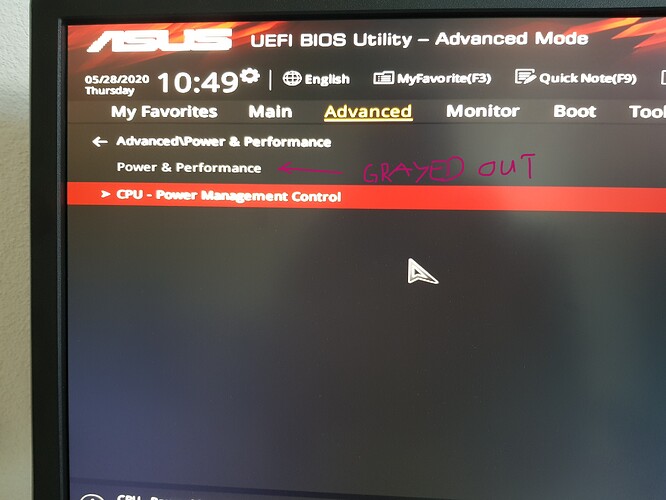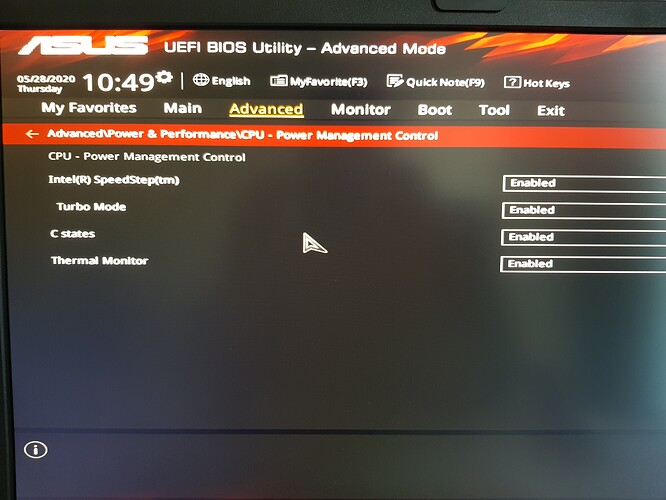@hasandoel2 , did you receive an answer to this? I looked but did not see any.
I had a similar problem, but I managed to get my RAM to max speed (2666 MHz) by changing most DRAM settings the UEFI to Auto, saving, and restarting the UEFI, then rebooting to Windows. MANY TIMES. I don’t know why, but the UEFI did not keep my DRAM changes when I hit "Save and Exit" most of the time. And I had to experiment with the settings to get it to make any actual changes to the RAM speed (checked with CPU-Z after reboot). And then if I tried to push it any farther, it either reduced the speed or the whole machine became unstable. So I took the victory and stopped trying to get any more gains.
I modded my ASRock H110M-STX two years ago to run an i7-7770K with the help of all these kind folks here. I bought a 16 GB kit of DDR4-2666 RAM, CL 16 to see if I could do anything to overclock the memory. In the end, I could not; the memory controller in the 7700k limits the RAM to 2400 MHz, and I’m just a beginner with an H110 board. However, when the RAM was running 10% below the limit printed on the sticks, the latency improved by almost 20%. I ended up with 2400, CL 13.
Then I went crazy and bought a second machine to mod for an i7-8700. I gave the first PC to my brother to justify the purchase, with the nice fast RAM, but he never used it. Oh, well.
The second time around, I didn’t get the best RAM I could; I just got a used machine and kept whatever the previous guy had thrown in there (unmatched sticks of 4 GB each, both at 2133 but with different latencies). So it ran at 2133, even though the i7-8700 could in theory support 2666 MHz. It was okay, but I knew it could be better.
Just last month, I finally upgraded the RAM. I looked around and saw 32 GB of HyperX Impact DDR4-2666 with 15-15-15-38 timings, for almost $200. There was also some G.Skill DDR4-3000 with 16-18-18-43 timings, for $150. The latency improved by underclocking the RAM on my first machine, so I tried it again–got the RAM that was faster than I could use, but with worse timings.
I put the new RAM in the machine, and … nothing. It runs at 2133. Passmark says the sticks are DDR4-3000, but CPU-Z says it’s 2133. I reboot a few times, and … nothing. I go into the UEFI and try to force the speed and timings to be 2666 and 18 with voltage of 1.2, reboot, and … nothing. I try again, and it runs at 2400! But I said 2666, what’s up? I try a bunch of different combinations of settings.
I finally got it to run at 2666 by setting almost everything in the UEFI to Auto. The DRAM base clock had to be set to 133 (the board actually runs at 100), then saved; then the DRAM target speed had to be set to 2666, then saved; and then the DRAM voltage had to be set to Auto. After saving and rebooting, the board recognized the RAM as 2666 with timings of 14-14-14-32 and voltage of 1.35. It was noticeably faster in Minecraft and with large spreadsheets. Yay!
(Those numbers are all according to CPU-Z. Passmark Performance Test just reports the numbers printed on the stick, DDR4-3000, 18-18-18-43, which is really unhelpful).
Then I tried to push it farther, and it reverted to 2133. I tried to force the voltage to 1.2, but then the RAM ran even slower. After a couple more tweaks it just stopped booting. Forget Windows; it wouldn’t even show the UEFI startup screen, wouldn’t beep–just blank screen with the CPU fan spinning.
When the UEFI finally came up again, I decided not to be so greedy and set it back to 133 bus, 2666 DRAM, Auto voltage. It booted, but the settings didn’t stick. Tried a bunch of times, but only got the machine to boot and run at 2133, sometimes less.
Luckily, I had saved the UEFI settings as a User Default the first time it worked, so I was able to reload them. They look the same on the screen as what I tried to enter so many times, but somehow they are different. Apparently the order in which I changed and saved each setting was important for getting it to work.
This all took about a day and a half.
I would try to tell you exactly which settings to change, but your board is SuperMicro, and mine is ASRock. ASRock provides some OC-like tweaking on non-Z boards, so there are many options to see and change. Maybe SuperMicro does not expose all the same settings, I don’t know. But if my experience is at all relevant, I would tell you to set everything about memory in the UEFI to Auto, and restart. Then change one DRAM setting at a time, focusing on the bus, RAM speed, and voltage. I think there was an option to set the RAM multiplier directly, but it wouldn’t work if I touched that; Auto was the only way to go.
Why? Almost certainly, it’s because the memory controller is in the CPU, so anything you set in the UEFI has a chance of stopping the CPU from seeing the RAM. Putting everything on Auto did not work for me–I had to force the memory bus to 133 MHz. Your board and CPU will probably behave differently. But start with Auto on every setting you can see for the DRAM, then restart about six times to see if the CPU and the board can figure out what kind of RAM you’ve got. If that doesn’t work, change and save just one setting at a time.
